Algae, Fossil Slime and Organic Precambrian Art
Stromatolites are the earliest physical life forms on earth; they were the precursors to pretty well everything you see living today. There may be indications of earlier life forms preserved as chemical signatures, but as fossils go, something you can see and touch, stromatolites are it. The oldest stromatolites known are from Western Australia – about 3400 million years old. These ancient structures were built by primitive algae and bacteria, aka cyanobacteria, sometimes referred to as blue-green algae. Clearly life had already evolved to something quite complex by 3400 million years ago.
Cyanobacteria and stromatolites also did something else that has been quite useful to our own existence. They photosynthesised CO2 to O2. Prior to about 2500 million years ago there was little or no free oxygen in the atmosphere. As stromatolites flourished, free oxygen began to accumulate so that by the time of the Cambrian explosion with its myriad life forms (beginning 540 million years ago) oxygen had increased to levels that were probably only a few percent lower than the concentrations we enjoy today.
Stromatolites are natural art forms
Their preservation in rock has left us a fantastic record, not only of how and where they grew, but also of something quite beautiful. Their shapes, textures and colours are the equal (from an aesthetic point of view) of trilobites, shellfish or dinosaurs.
All of the stromatolite examples presented herein are from various rock formations in the Belcher Islands of Hudson Bay. They are about 2000 million (2 billion) years old. There is 7000 to 9000 metres of Precambrian stratigraphy exposed on the islands, that includes many different kinds of sedimentary and volcanic rock. I worked on all these rocks for my PhD thesis from 1976-1979. I could not have wished for a better thesis and field location (especially arriving fresh from New Zealand), or a better thesis supervisor in Professor Al Donaldson at Carleton University, Ottawa.
Polite denegration
Stromatolites are sometimes referred to in these posts as ‘fossil slime’. Stand on living mats of algae and you’ll probably end up on your backside. But the reality is that in living form, mats of algae are green-brown and slimy.
The algae, or cyanobacteria form colonies in thin layers, or mats. They grow in water, more commonly in shallow seawater, but are also well known in freshwater environments. They mostly grow in shallow water because they need sunlight to photosynthesize. Although the mats are organic, they also accumulate inorganic material and this is accomplished in two ways:
1 Particles of mud silt and sand adhere to the sticky algal filaments, and
2 The algae themselves promote precipitation of calcium carbonate (CaCO3) as calcite or aragonite.
The adhered sediment helps to promote the preservation of the mats.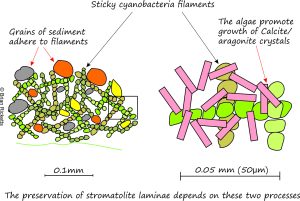
Multifarious shapes and sizes
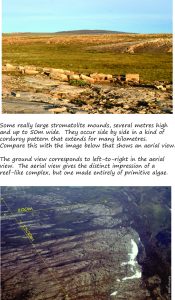 Stromatolites are threedimensional structures that occur in layers of carbonate (e.g. limestone) or sandstone. They grew in a myriad shapes and sizes, from huge mounds 100s of metres wide, to microstructures a few millimetres across. Growth rates of modern stromatolites are pretty low – a millimetre or less per year, so some of the larger stromatolites probably represent growth periods of 100s if not 1000s of years.
Stromatolites are threedimensional structures that occur in layers of carbonate (e.g. limestone) or sandstone. They grew in a myriad shapes and sizes, from huge mounds 100s of metres wide, to microstructures a few millimetres across. Growth rates of modern stromatolites are pretty low – a millimetre or less per year, so some of the larger stromatolites probably represent growth periods of 100s if not 1000s of years.
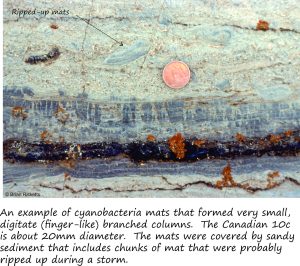 As fossils they present a wonderful array of shapes; simple columns or highly ornate, branched columns, bulbous, flattened and fan-like structures. Internally the structures are layered; each layer represents a former algal mat (or perhaps several mats that have coalesced). The layering is one of the defining characteristics of stromatolites.
As fossils they present a wonderful array of shapes; simple columns or highly ornate, branched columns, bulbous, flattened and fan-like structures. Internally the structures are layered; each layer represents a former algal mat (or perhaps several mats that have coalesced). The layering is one of the defining characteristics of stromatolites.
Prior to the 1970s many geologists who worked on these ancient fossils thought that the various stromatolite shapes were determined by ‘species’, in much the same way that fossil plants or dinosaurs were divided into genera (Tyranosaurus and so on). However, we now know that most stromatolite shapes are determined by environmental factors such as:
water depth,
water turbidity,
currents, waves, and
availability of sediment.
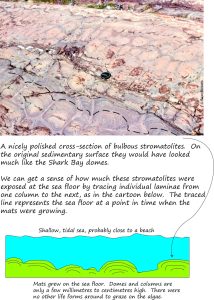 During the Precambrian (4600 to 540 million years ago) there were no critters that might have wanted to graze on these algal forests; this situation changed dramatically from the beginning of the Cambrian when all manner of crawling, sliding, burrowing and swimming critters included algae in their diet, perhaps as side-salads. This is one of the main reasons why stromatolites today are restricted to a few special environments, such as really salty lagoons where no one else wants to live. Good examples of modern stromatolite-like structures are found in Shark Bay (Western Australia).
During the Precambrian (4600 to 540 million years ago) there were no critters that might have wanted to graze on these algal forests; this situation changed dramatically from the beginning of the Cambrian when all manner of crawling, sliding, burrowing and swimming critters included algae in their diet, perhaps as side-salads. This is one of the main reasons why stromatolites today are restricted to a few special environments, such as really salty lagoons where no one else wants to live. Good examples of modern stromatolite-like structures are found in Shark Bay (Western Australia).
Belcher Islands is a great place to study Precambrian environments. The islands themselves are beautiful, sinuous forms rising out of Hudson Bay. There are many different kinds of sedimentary and volcanic rock. Many strata contain beautiful stromatolites; one would never tire of looking at them.
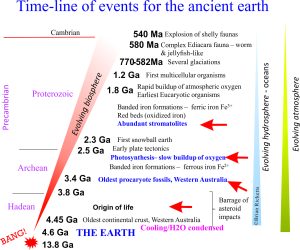
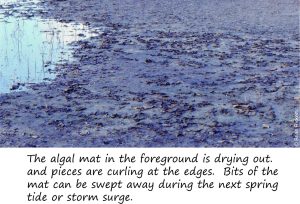
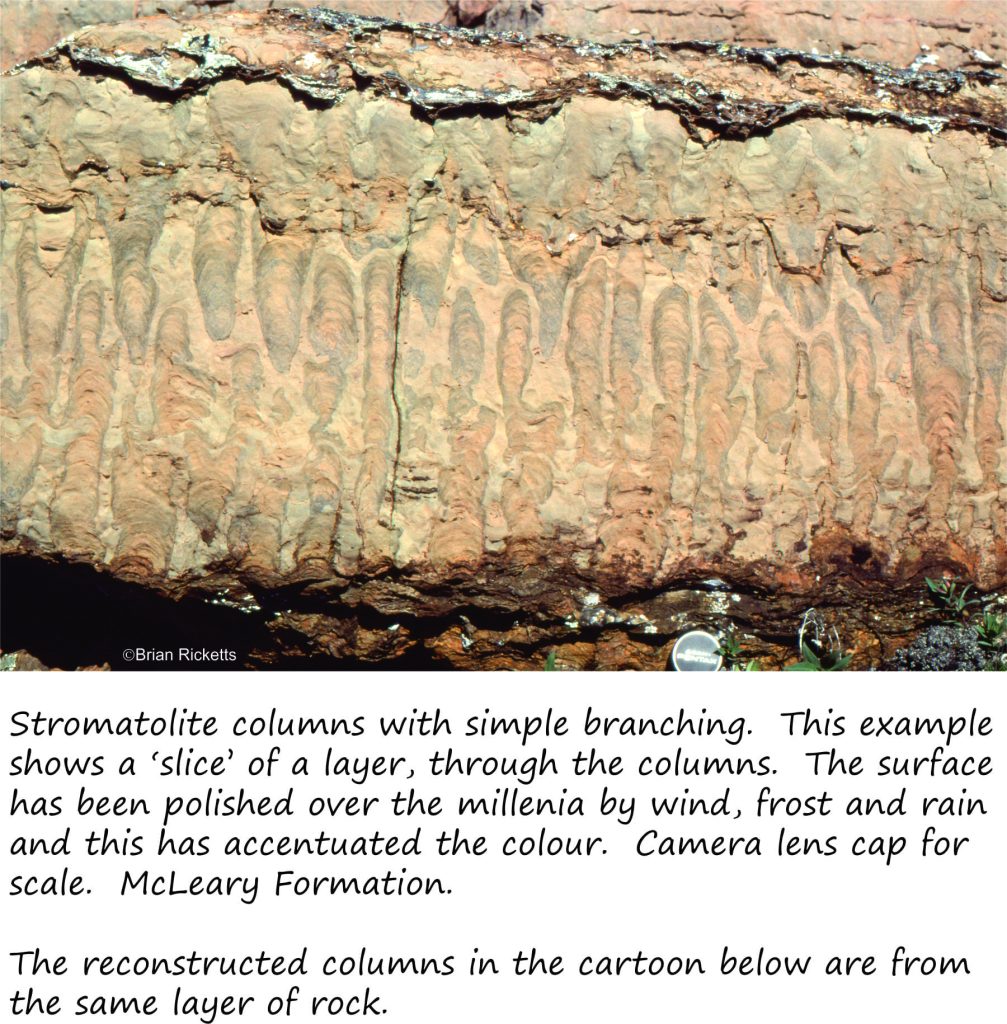
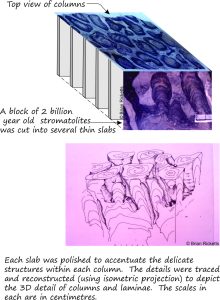
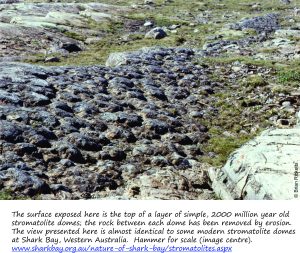

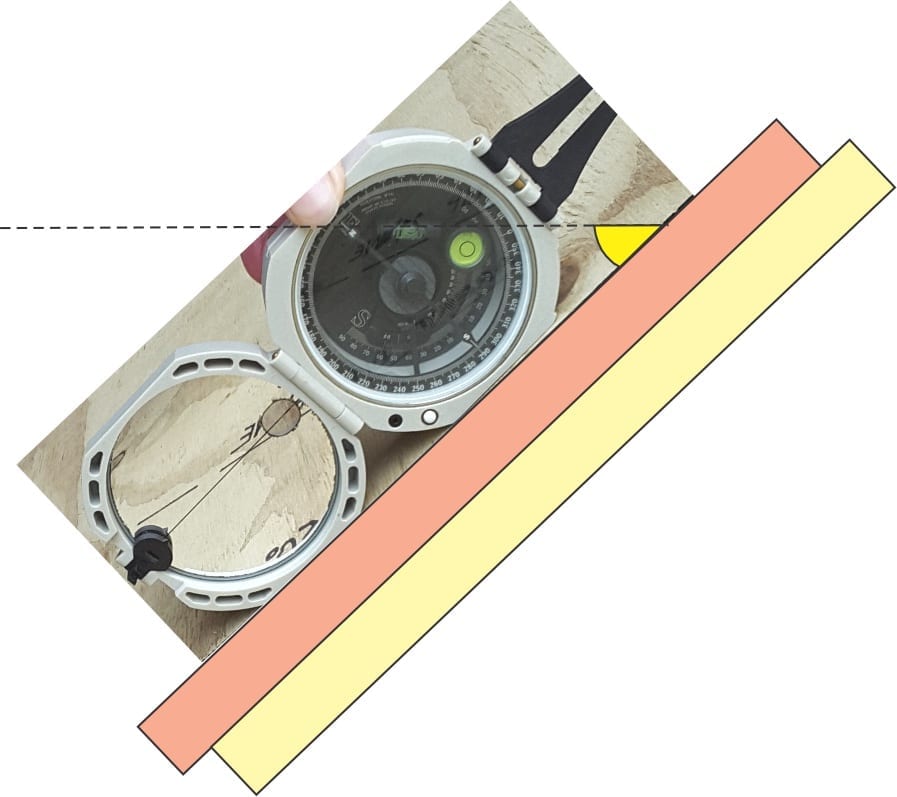
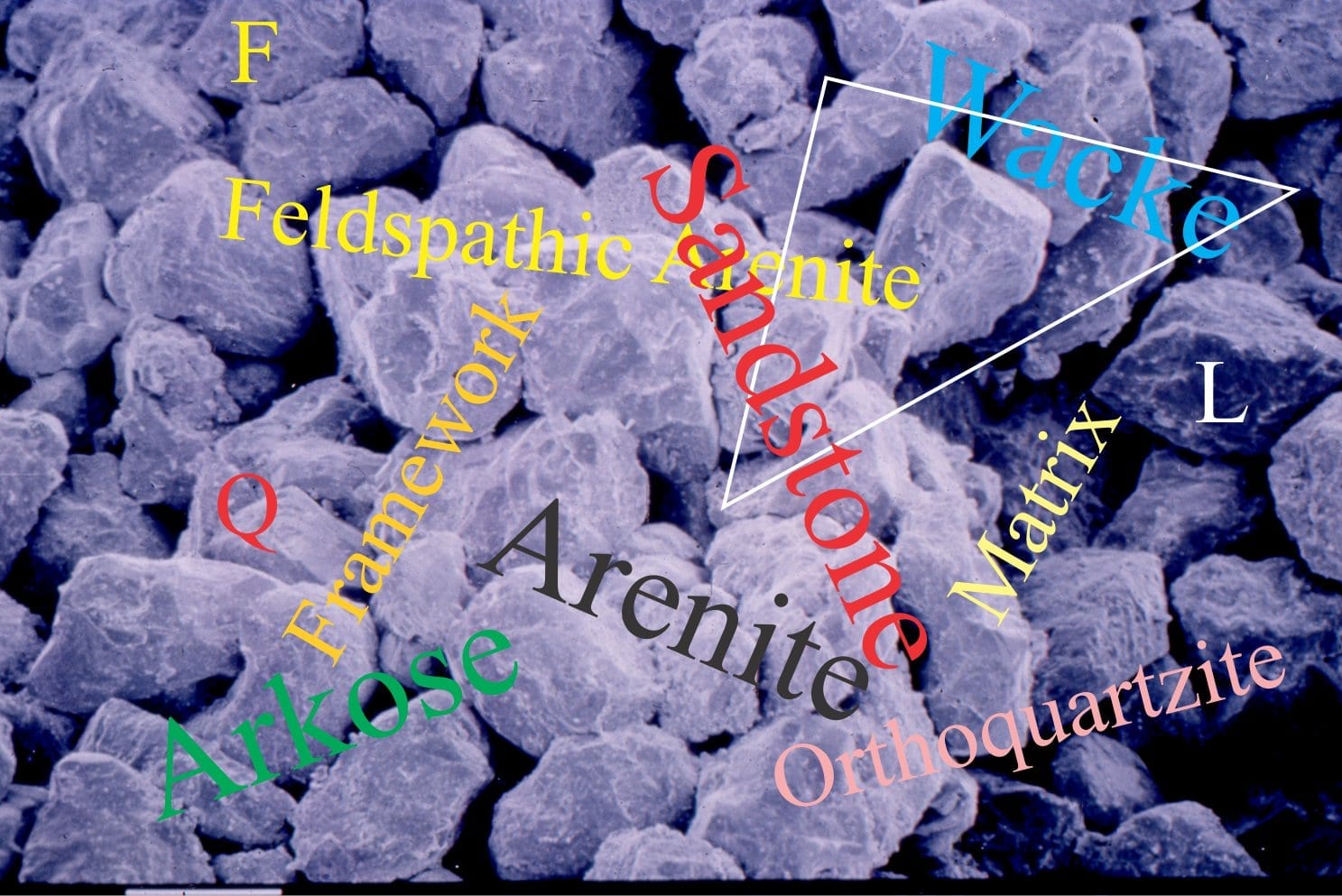
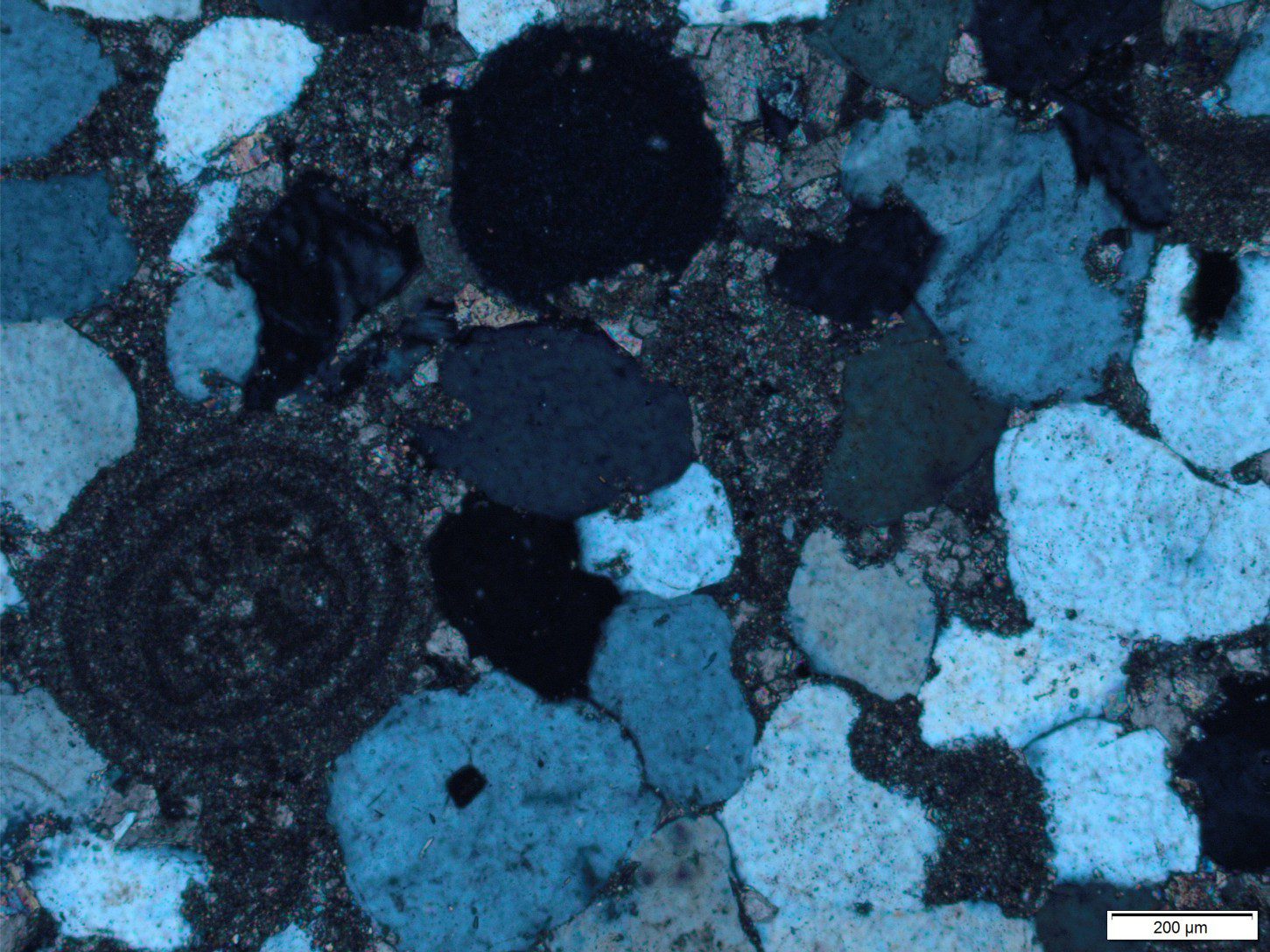
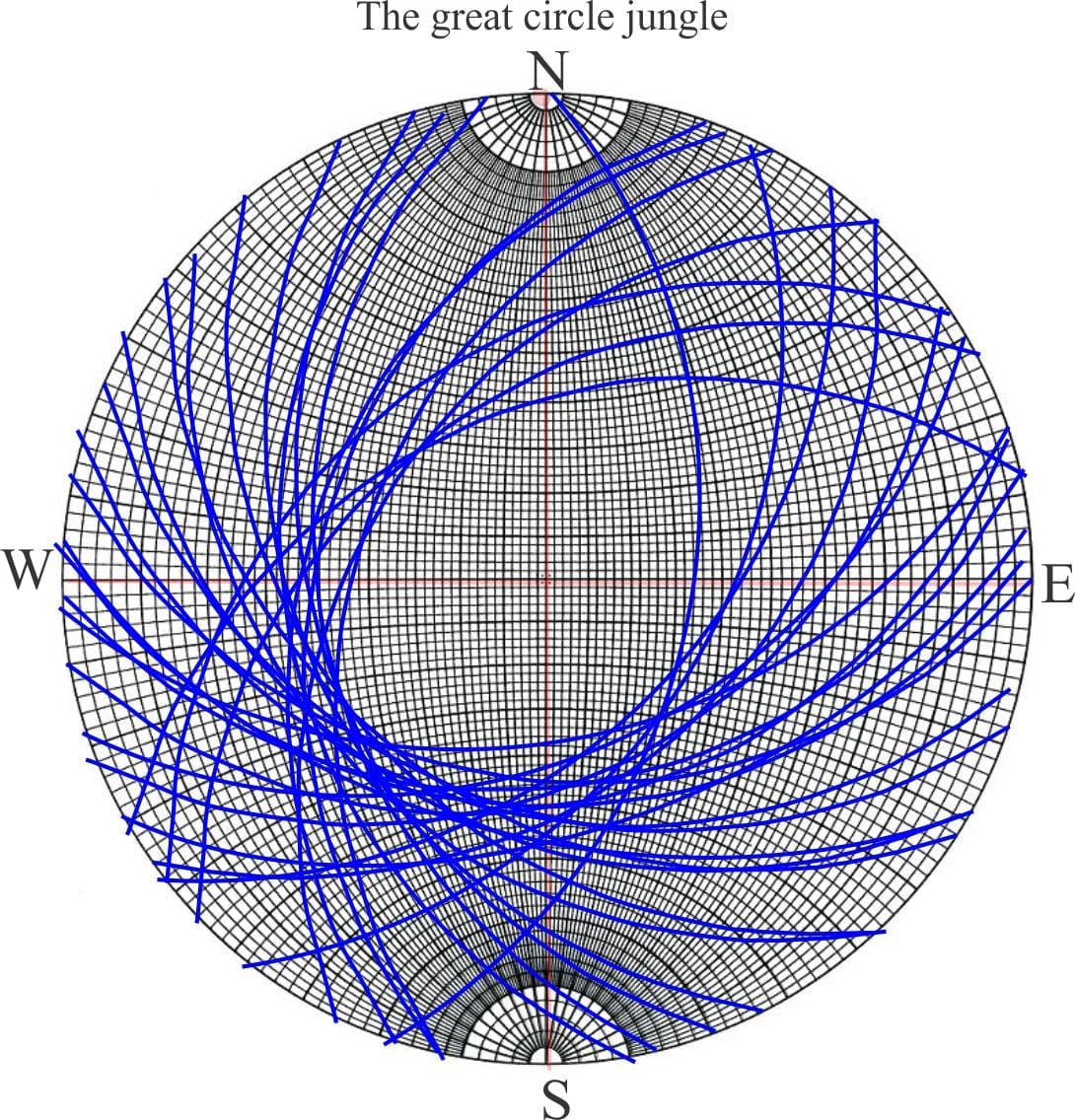
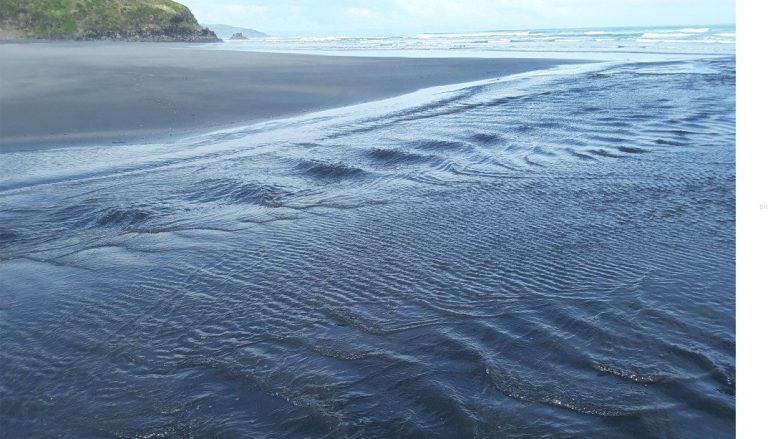
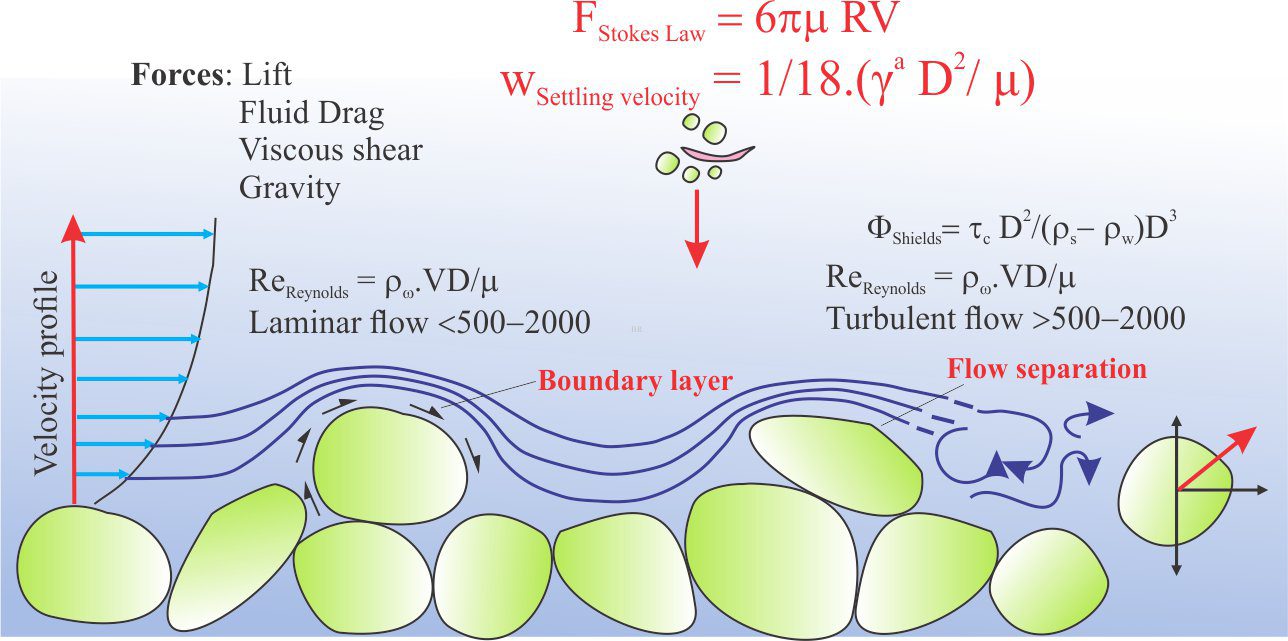
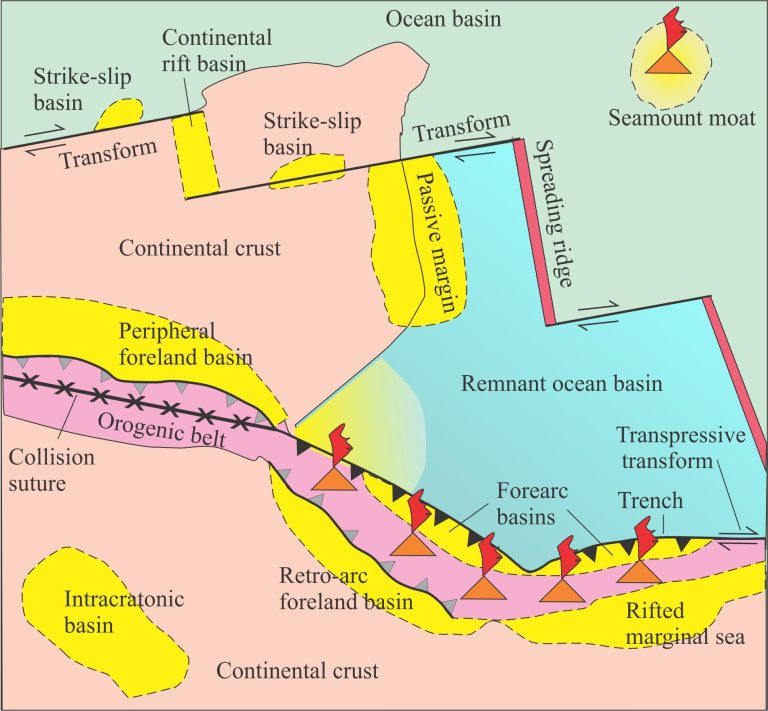
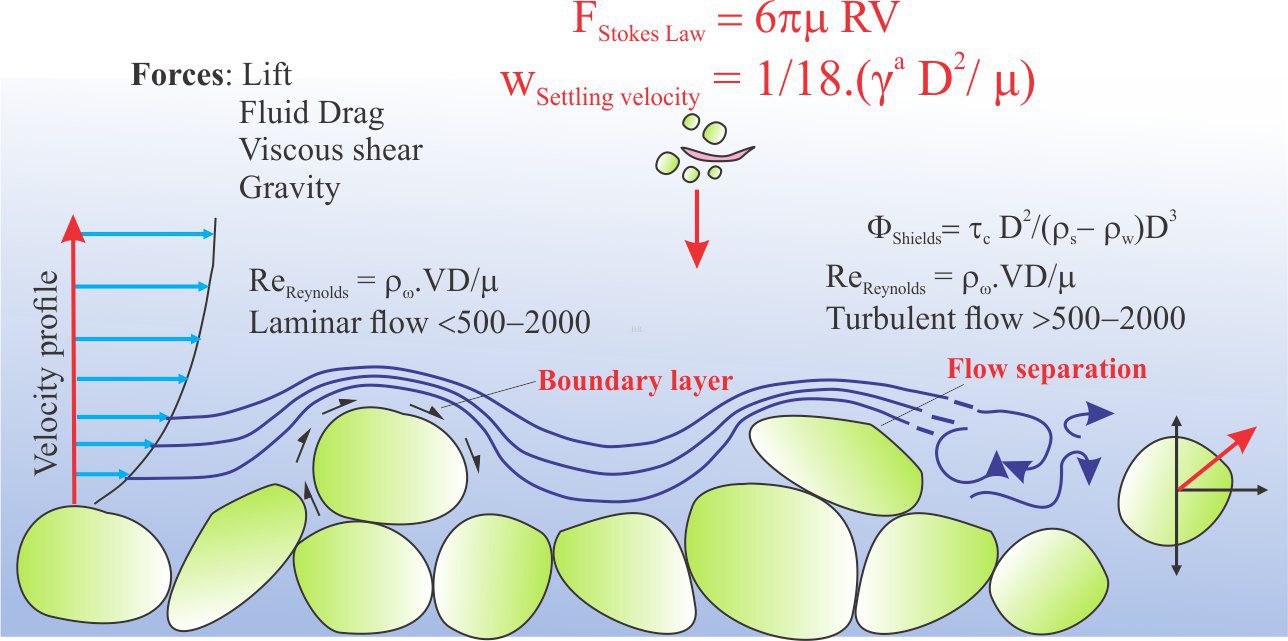

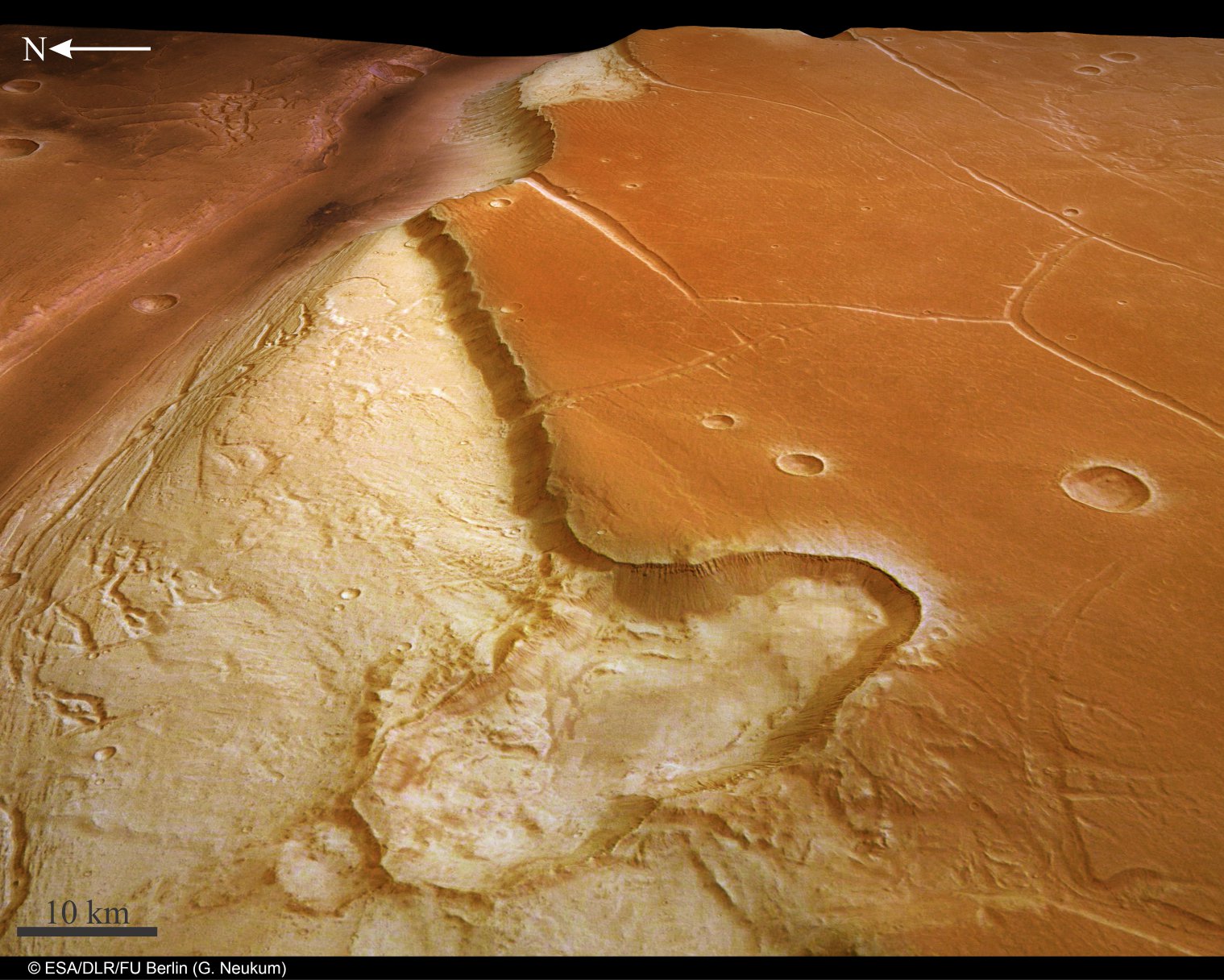
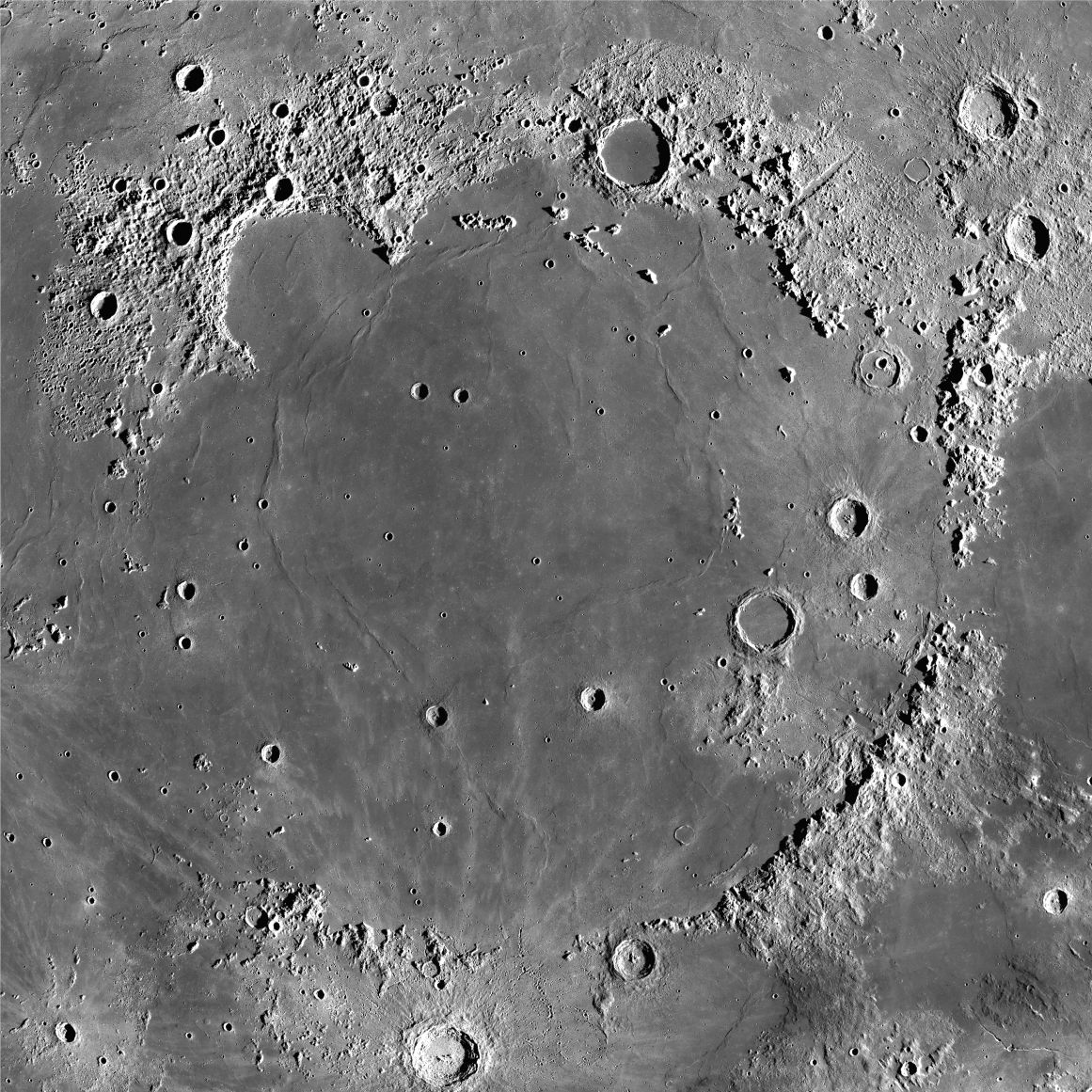

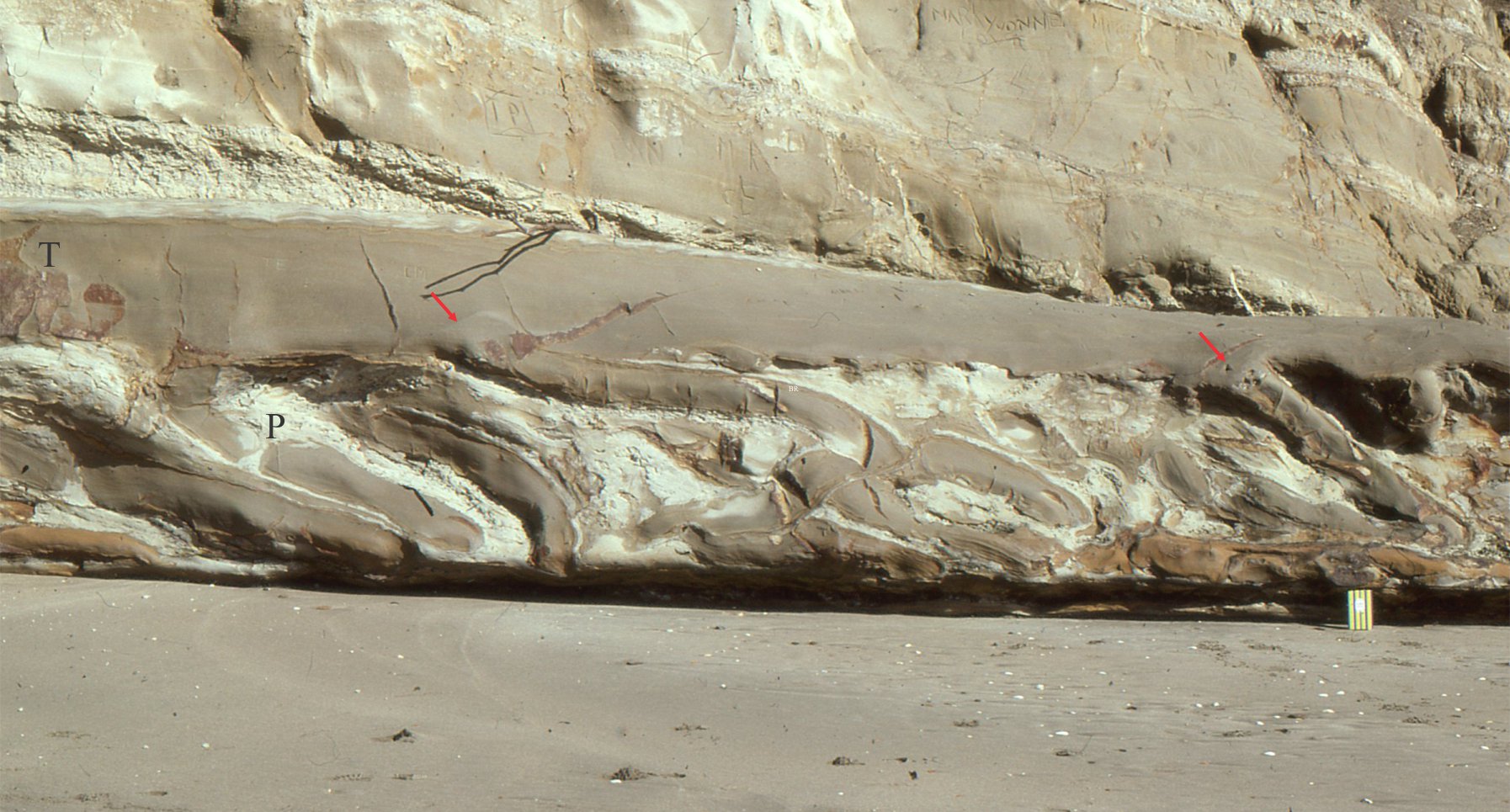
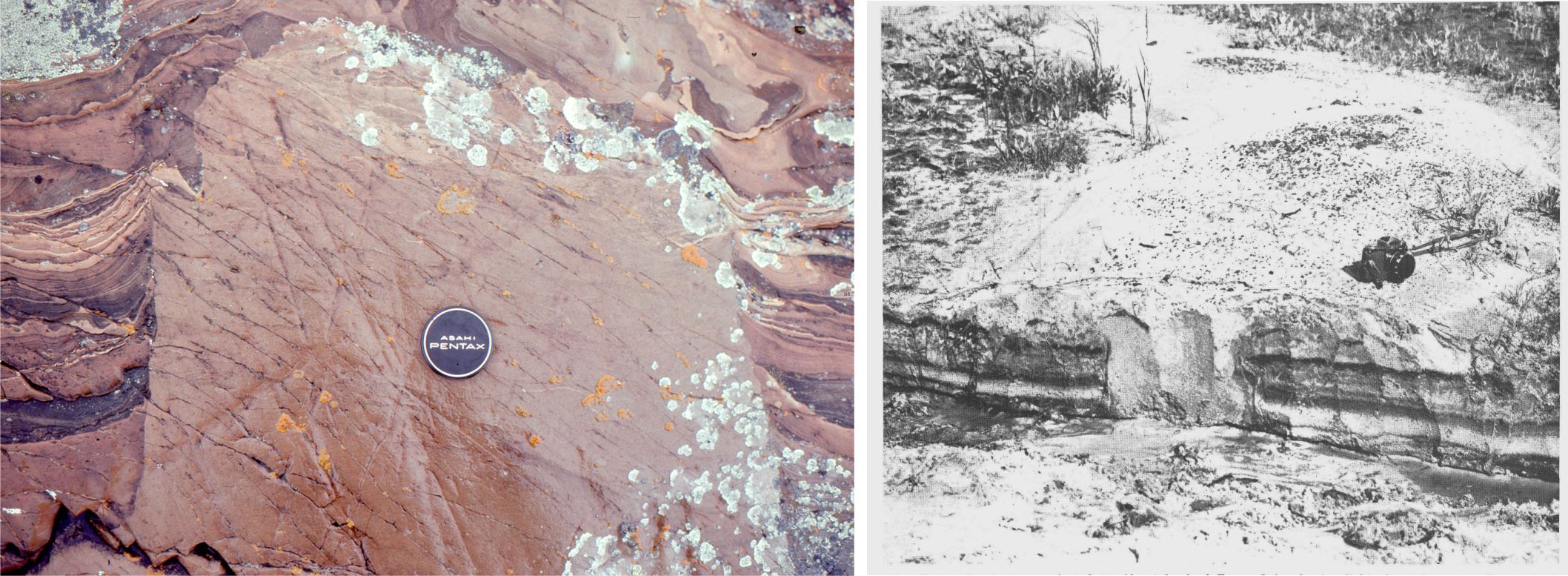
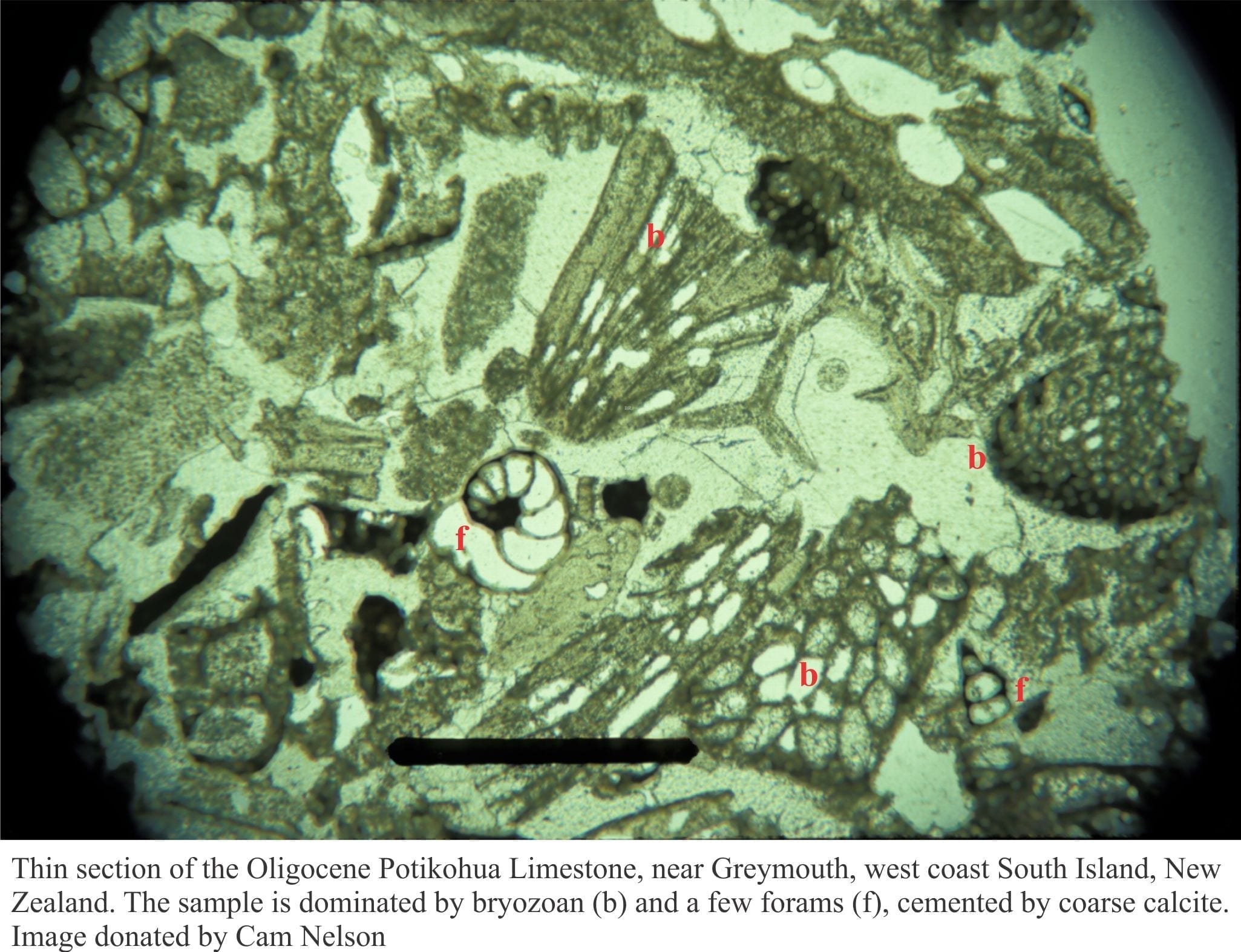

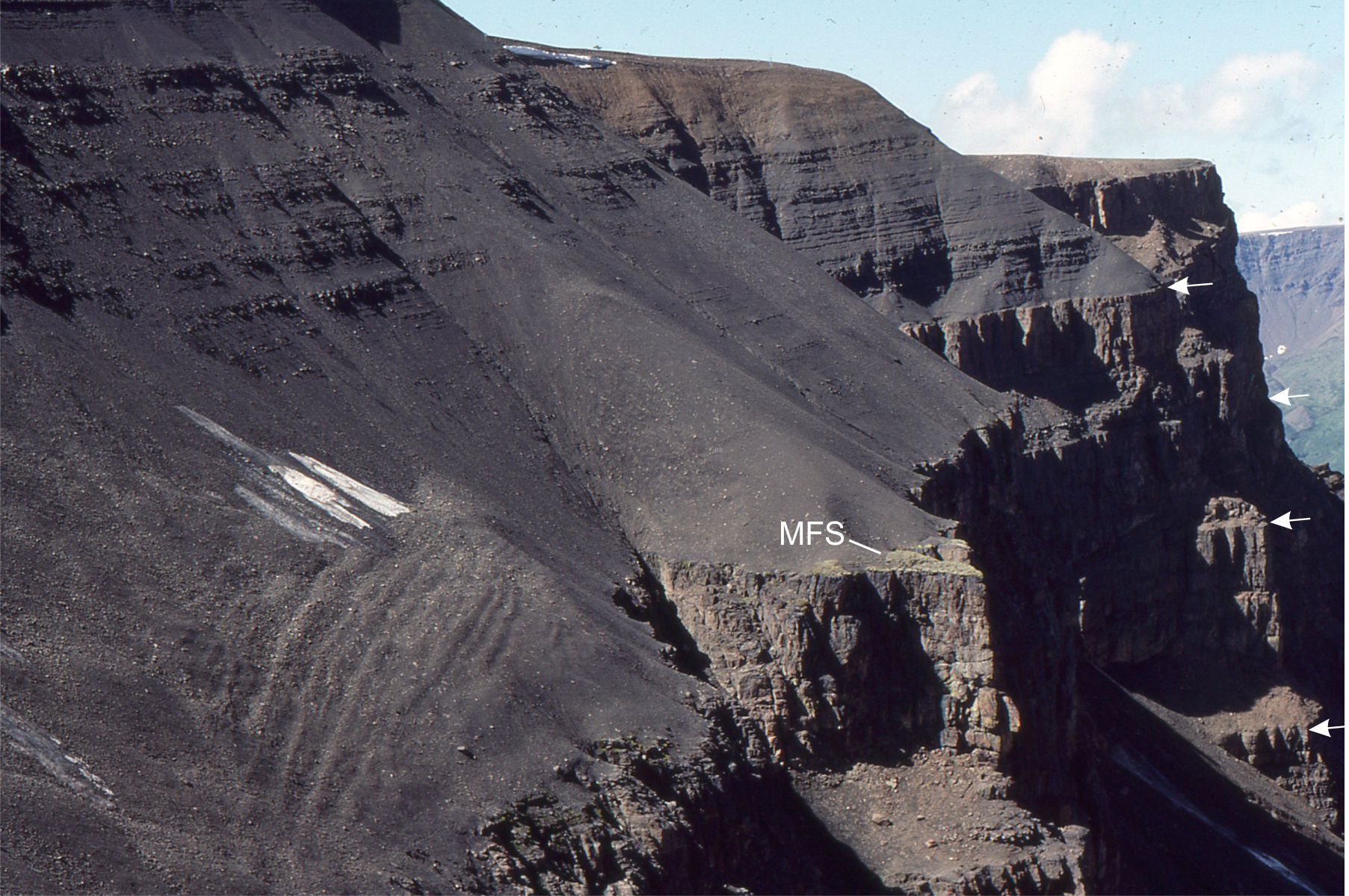
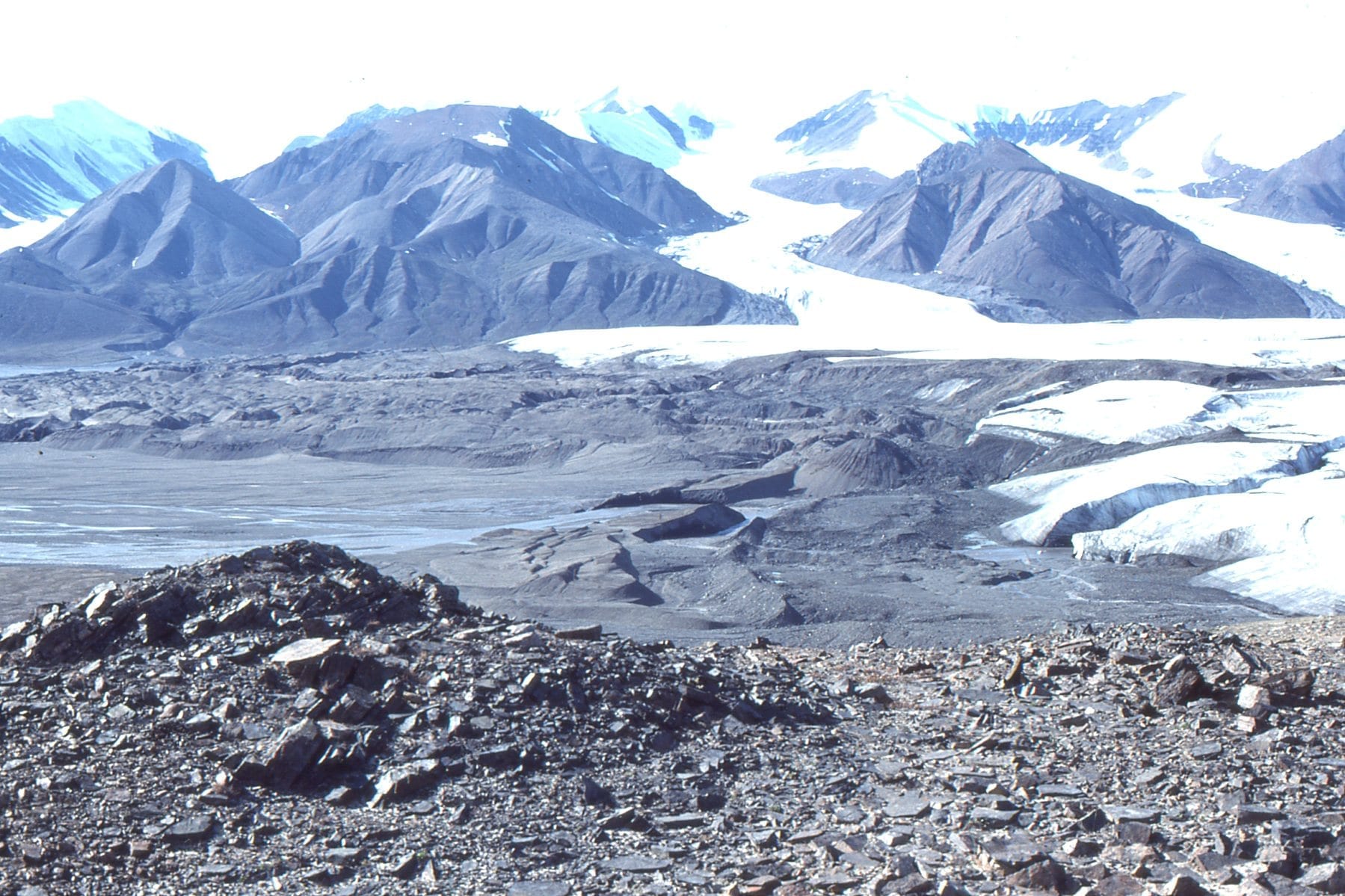
2 thoughts on “The Ancient Earth 7. The Art of the Stromatolite”
Pingback: nanoo
AS you see I’m using WordPress. For my purposes, the theme I use (and probably all the ready-made themes) has good functionality. As a provider they respond reasonably quickly to problems, questions. I think you can get a free version although the various options available are limited. But paying for a basic theme is not expensive, and you can, at the same time as installing this, establish a domain name and provider (they recommend Bluehost, but you can choose another if you wish. I suggest you look at their website and go from there. It is pretty straight forward.